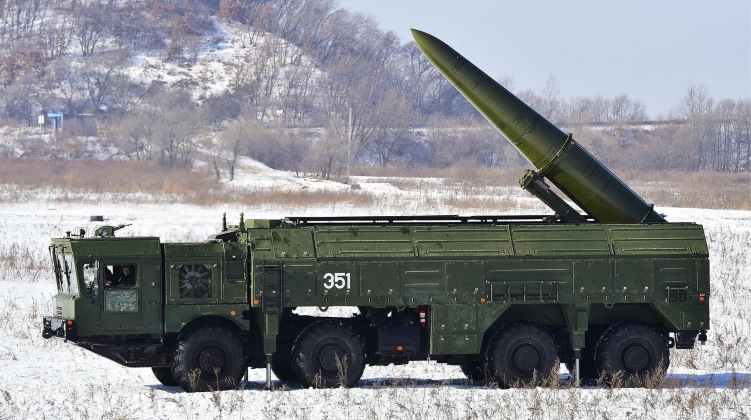Although Russia has refrained from committing many of its most capable assets to its military operation in Ukraine, which was initiated on February 24, the conflict has provided some insight into the country’s military capabilities particularly as it has made extensive use of standoff ballistic and cruise missiles for precision strikes. Russia’s only class of ground launched tactical ballistic missile the Iskander-M, which was previously deployed in conflicts in Syria and Georgia and represents one of the most heavily relied on assets in the Russian Army, has been revealed to have a force multiplying asset a penetration aid (PENAID) designed to help it confuse enemy ballistic missile defences. The system is reportedly activated when a missile is targeted by air defences, and releases once the missile determines it is threatened. A single missile from the Iskander-M system can be loaded with at least six decoys in tubes at the base of the body. Similar decoys may potentially be deployed from other Russian tactical ballistic missiles, most notably the Kh-47M2 which is based on the Iskander but launched from the air.

It remains uncertain how the new PENAIDs work, but they appear to feature two different kinds of countermeasures: a jammer for disrupting radar frequency emitters and a heat decoy to confuse infrared-guided missiles. The body of the decoy itself may also serve as a spoof by creating a larger radar signature to appear as a real missile without needing to interfere with enemy systems. Ukraine deploys a range of assets well suited to defence against short range ballistic missiles, most notably the S-300V and the S-300PS/PT, although their ability to engage targets such as the Iskander remains highly questionable with the systems having been built in the 1980s and seeing negligible improvements to their capabilities since. The Iskander was designed to be able to evade the most advanced NATO air defences, and combines launches using depressed quasi-ballistic trajectories with hypersonic speeds on impact and a high level of manoeuvrability considered well beyond the capabilities of Ukrainian defences to threaten. The use of the new system could well provide valuable information to both Ukraine’s NATO allies and to Russia itself.
